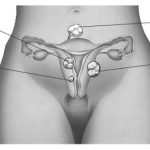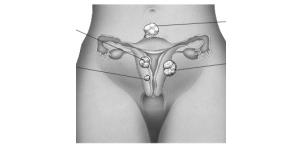 A patient taught me about fibroids when I was a third year medical student. During our clinical rotation, we had to interview patients and then present our findings and diagnosis to our attending physician. She told me she had “fireballs on her uterus,” and put my hand on her belly to feel a giant firm mass. She proceeded to tell me her many symptoms.
A patient taught me about fibroids when I was a third year medical student. During our clinical rotation, we had to interview patients and then present our findings and diagnosis to our attending physician. She told me she had “fireballs on her uterus,” and put my hand on her belly to feel a giant firm mass. She proceeded to tell me her many symptoms.
Uterine fibroids are common, affecting at least 30 percent of women at some time during their life. Fibroids are non-cancerous (benign) tumors growing in the muscle layers of the uterus. They are solid growths of smooth muscle and fibrous tissue. They are rarely cancerous (malignant).
We do not know exactly what causes fibroids. We do know that the tendency to get fibroids is hereditary and they are more common in certain ethnic groups. These tumors are estrogen dependent and tend to shrink after menopause. When estrogen levels are high, especially during pregnancy, fibroids tend to grow.
Many women have no symptoms at all and do not even know they have them. When symptoms do develop they may include heavy painful periods, anemia, pelvic discomfort, frequent urination and backache. Fibroids may also cause infertility and problems in pregnancy such as miscarriages or premature labor.
Most women with fibroids do not have symptoms severe enough to warrant treatment. Observation is often the best option for many women. When treatment is necessary it may be in the form of medication or surgery. Treatment will depend on the size and location of the fibroids, the severity of the symptoms and the woman’s desire to have children in the future.
Treatment options include:
Medical:
Oral contraceptives
Anti-inflammatory drugs
Transexamic acid
Intrauterine device (IUD) containing progesterone
Surgical:
Endometrial ablation – removing the lining of the uterus.
Myomectomy – removing the fibroids.
Hysterectomy -removing the uterus.
Uterine Artery Embolization (UAE) – this treatment stops the fibroids from getting its blood supply.
Many women with symptomatic fibroids delay reporting them. In a recent Harris Interactive survey of more than 800 fibroid patients, women reported waiting three-and-a-half years, on average, before seeking help; a third said they waited more that five years.
If you had another condition that caused you to miss work or feel exhausted, wouldn’t you seek help? If you are struggling with this problem, it is important to know there are answers.
This column is no substitute for seeing your own health care provider.
Dr. Paula Dhanda is a practicing physician in Kelseyville. She is the founder of Worldwide Healing Hands. She may be reached at 279-8733 or visit https://drspecialtycare.com/ or http://www.worldwidehealinghands.org/.

